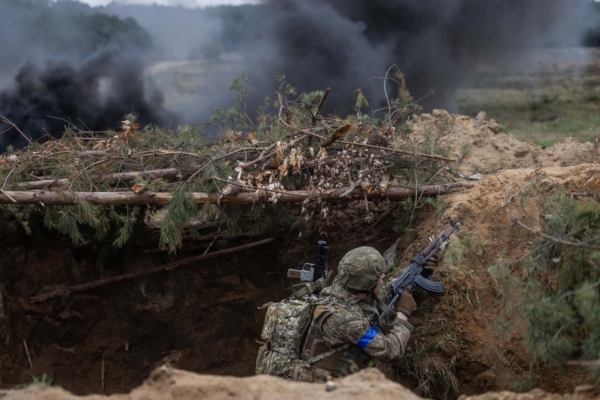In the escalating conflict against Russia, Ukraine has introduced the “Dragon Drones” capable of unleashing the fiery “Dragon” unmanned aerial vehicles (UAVs). These drones can spray aluminum thermite with temperatures soaring up to 2,200 degrees Celsius, turning Russian military positions near Kharkiv into blazing infernos.
Over the past few days, these stunning videos have sparked widespread attention on social media. The footage depicts low-flying drones spraying fire streams (actually molten metal) towards the wooded areas controlled by the Russian forces. This was not merely a Ukrainian test; it was a real combat mission.
According to reports by the Cable News Network (CNN), these drones actually dropped aluminum thermite, a white-hot mixture of aluminum powder and iron oxide burning at temperatures up to 2,200 degrees Celsius (4,000 degrees Fahrenheit). This can rapidly incinerate the trees and vegetation providing cover for the Russian forces, destroy Russian military equipment concealed beneath the foliage, and even directly incapacitate or kill Russian troops.
When aluminum thermite descends from the UAVs, it resembles flames spewing from a dragon’s mouth in myths, hence the name of these drones.
Enemies facing aluminum thermite attacks are left with little means of defense as it can easily burn through anything, including metal.
The Ukrainian 60th Mechanized Brigade posted on social media, declaring, “The aerial strike drones are our wings of vengeance, capable of launching flames from the sky!”
“They pose a real threat to the enemy, obliterating their positions with precision that other weapons cannot achieve,” the Ukrainian army continued in the post.
“Action on Armed Violence” (AOAV) states that the drones drop this material directly through the cargo bay, where the high temperature quickly ignites it, causing everything inside to drop down. Ukraine previously used aluminum thermite dropped by drones to permanently destroy Russian tanks.
“The precision combined with the drones’ ability to bypass conventional defense systems makes aluminum thermite bombs a highly effective tool in modern warfare,” AOAV remarked.
Aluminum thermite was discovered by a German chemist in the 1890s, originally used for welding iron rails. However, according to McGill University’s historical records, its military efficacy soon became evident, as Germany deployed aluminum thermite bombs during World War I.
In World War II, both the German and Allied forces utilized this weapon.
Aluminum thermite is just one type of “incendiary weapon,” with others including napalm bombs and white phosphorus.
The United Nations Department for Disarmament Affairs warns that incendiary weapons can cause extensive destruction and environmental damage.
Russian forces have used incendiary bombs in their attacks on Ukraine, but these have not led to swift victories for Russia. Nicholas Drummond, a defense industry analyst specializing in land warfare and a former British Army officer, told CNN that he does not believe the “Dragon Drones” will significantly alter the Ukrainian army’s combat situation.
Drummond also mentioned that, to his knowledge, Ukraine has limited capability in utilizing such aluminum thermite weapons. Therefore, it cannot be deemed a new mainstream weapon.
However, he noted that aluminum thermite does give the Russian forces another reason to fear Ukrainian drones. “We’ve already seen Russian forces abandoning positions under attack by multiple drones. The more Ukraine can instill fear of drones in the Russian forces, the greater the chances of success,” he said. “Aluminum thermite can sustain this pressure.”

